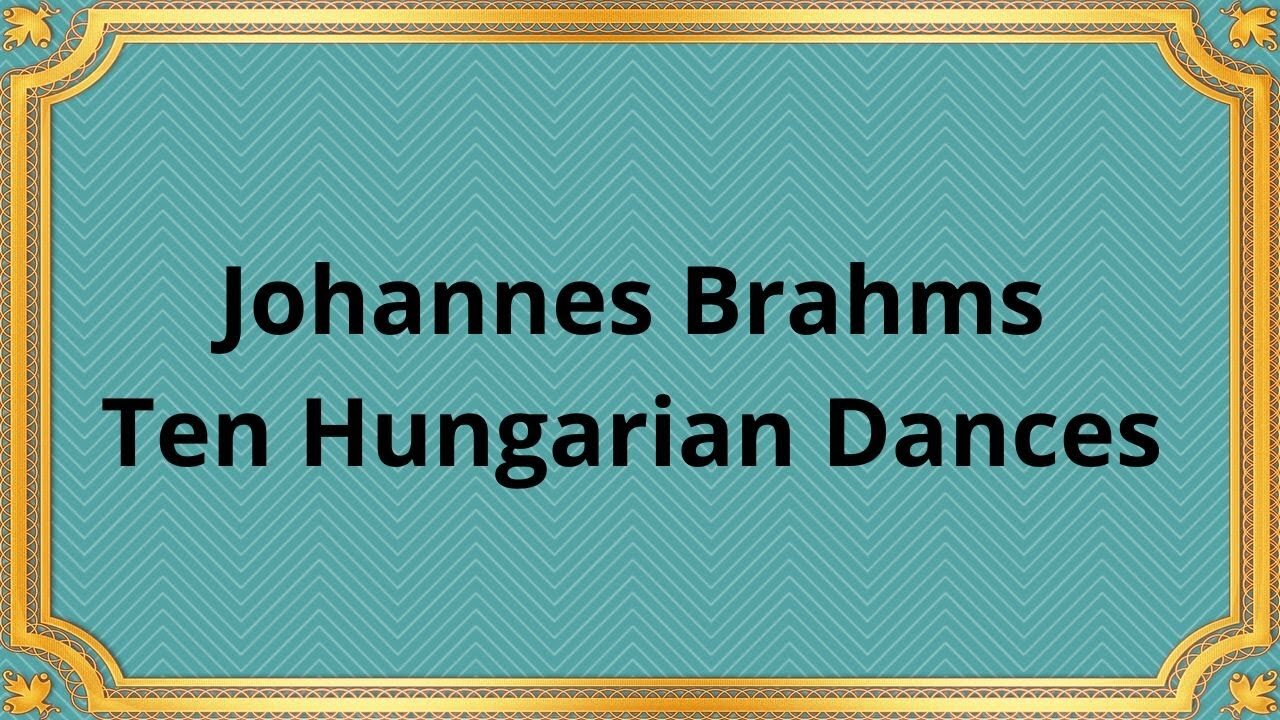Premium Only Content

Johannes Brahms Ten Hungarian Dances
#JohannesBrahms #HungarianDances #ClassicalMusic #MusicComposition #FolkMusic #HungarianCulture #OrchestralMusic #PianoMusic #Composers #TraditionalMelodies
Vienna Festival Orchestra
Direction: David Josefovitz
Johannes Brahms' Ten Hungarian Dances represent a captivating collection of musical compositions that are deeply rooted in the folk traditions of Hungary. Composed between 1869 and 1880, these dances are a testament to Brahms' fascination with the vibrant and spirited melodies of Hungarian folk music, which he skillfully incorporated into his own classical compositions.
Each of the ten dances is a miniature gem, showcasing Brahms' ingenuity in adapting traditional Hungarian folk tunes into the realm of classical music. Originally written for piano four hands, these lively and evocative pieces were later orchestrated by Brahms, expanding their reach and impact within the orchestral repertoire.
The Hungarian Dances display a remarkable variety of themes, rhythms, and moods, reflecting the rich tapestry of Hungarian musical traditions. From the exuberant and spirited rhythms of the Csárdás to the melancholic and lyrical melodies of the Lassan, each dance presents a unique musical journey that captures the essence of Hungarian folk culture.
Brahms' treatment of these folk melodies demonstrates his keen understanding of orchestration and his ability to infuse these traditional tunes with a sense of grandeur and sophistication. The dances are characterized by their infectious energy, vivid orchestral colors, and rhythmic vitality, making them a joyous and captivating listening experience.
The Ten Hungarian Dances have enjoyed enduring popularity and have been embraced by audiences and performers alike. Their accessibility, melodic charm, and evocative character have made them a staple of the orchestral and chamber music repertoire. Furthermore, their influence extends beyond the concert hall, as they have been featured in various adaptations and arrangements, further solidifying their status as beloved classics.
Johannes Brahms' Ten Hungarian Dances stand as a testament to the composer's ability to bridge the worlds of classical and folk music, creating a musical legacy that continues to captivate and inspire audiences around the world. Their timeless appeal and enduring popularity serve as a testament to Brahms' genius in capturing the essence of Hungarian folk traditions within the realm of classical music.
You have the opportunity to support the channel:
https://destream.net/live/RadSiarAl/donate
https://www.buymeacoffee.com/6355radsiara
-
 6:07
6:07
Classical music_Music Inspiration
11 days agoJoseph Haydn Piano Sonata in D Major, Hob. XVI:51
401 -
 LIVE
LIVE
Randi Hipper
44 minutes agoGROUNDBREAKING CRYPTO BILL INTRODUCED! WHAT THIS MEANS FOR BITCOIN INVESTORS
344 watching -
 LIVE
LIVE
Vigilant News Network
14 hours agoRFK Jr. Clears Major Hurdle for HHS Secretary | The Daily Dose
1,137 watching -
 1:28:24
1:28:24
Game On!
15 hours ago $0.61 earnedTom Brady's SHOCKING Super Bowl Pick!
15.8K1 -
 1:12:24
1:12:24
Jeff Ahern
2 hours ago $0.08 earnedNever Woke Wednesday with Jeff Ahern (6am Pacific)
13.7K4 -
 18:52
18:52
Producer Michael
18 hours agoI GOT PULLED OVER BY THE POLICE IN MIAMI!
60.3K6 -
 1:21:53
1:21:53
MTNTOUGH Fitness Lab
23 hours agoThe Fight That Almost Destroyed Jim Miller (& How He Overcame It) to Break UFC Records
61.2K4 -
 24:46
24:46
Cooking with Gruel
1 day agoFeeding Hope - LA Wildfire Relief from the People
42.3K8 -
 14:34
14:34
MichaelBisping
15 hours agoSean Strickland CONFRONTS Bisping! 'Pereira in Corner, Dricus and Khamzat!' (EXCLUSIVE INTERVIEW)
23.9K4 -
 59:54
59:54
Trumpet Daily
22 hours ago $3.63 earnedThe Trade War Ends - Trumpet Daily | Feb. 4, 2025
22.8K26